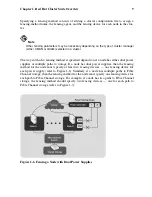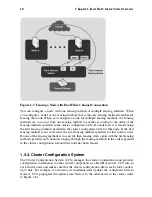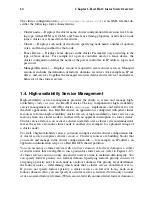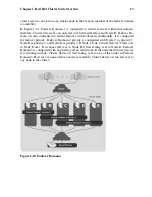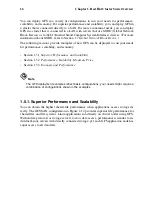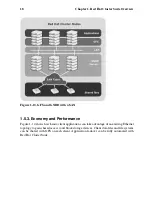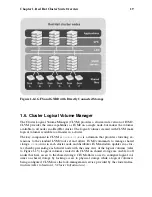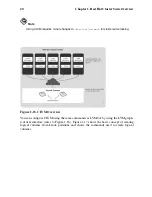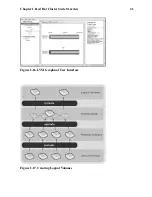
Chapter 1. Red Hat Cluster Suite Overview
23
•
To balance the load across the real servers.
•
To check the integrity of the services on each real server.
The backup LVS router monitors the active LVS router and takes over from it in case the
active LVS router fails.
Figure 1-19 provides an overview of the LVS components and their interrelationship.
Figure 1-19. Components of a Running LVS Cluster
The
pulse
daemon runs on both the active and passive LVS routers. On the backup LVS
router,
pulse
sends a
heartbeat
to the public interface of the active router to make sure the
active LVS router is properly functioning. On the active LVS router,
pulse
starts the
lvs
daemon and responds to
heartbeat
queries from the backup LVS router.
Once started, the
lvs
daemon calls the
ipvsadm
utility to configure and maintain the
IPVS (IP Virtual Server) routing table in the kernel and starts a
nanny
process for each
configured virtual server on each real server. Each
nanny
process checks the state of one
configured service on one real server, and tells the
lvs
daemon if the service on that real
server is malfunctioning. If a malfunction is detected, the
lvs
daemon instructs
ipvsadm
to remove that real server from the IPVS routing table.
If the backup LVS router does not receive a response from the active LVS router, it initiates
failover by calling
send_arp
to reassign all virtual IP addresses to the NIC hardware
addresses (
MAC
address) of the backup LVS router, sends a command to the active LVS
Summary of Contents for CLUSTER SUITE - FOR RHEL 4
Page 1: ...Red Hat Cluster Suite for RHEL 4 Overview ...
Page 4: ......
Page 10: ...vi About This Document ...
Page 47: ...Chapter 1 Red Hat Cluster Suite Overview 37 Figure 1 25 Cluster Configuration Structure ...
Page 62: ...52 Chapter 1 Red Hat Cluster Suite Overview ...
Page 72: ...62 Chapter 2 Red Hat Cluster Suite Component Summary ...

